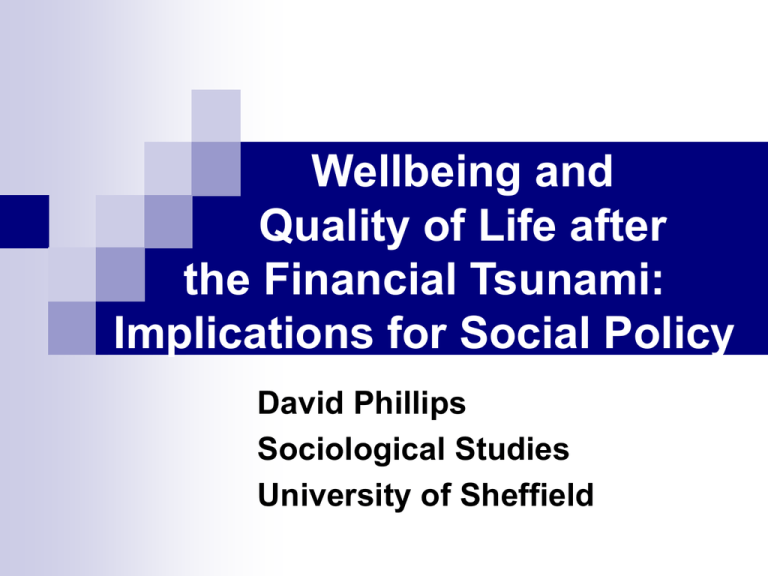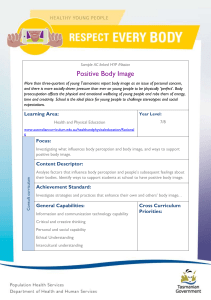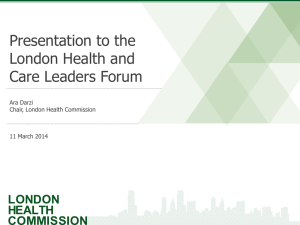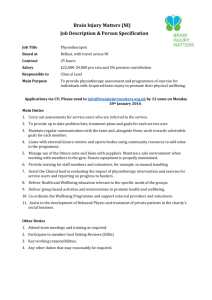Implications for social policy
advertisement

Wellbeing and Quality of Life after the Financial Tsunami: Implications for Social Policy David Phillips Sociological Studies University of Sheffield Overview What is social policy? What is quality of life? The social division of welfare and wellbeing The extent of the global financial tsunami Implications for social policy implications for quality of life Social Policy: the five “Giants” [Beveridge Report, 1942] Want Disease Ignorance Idleness Squalor [poverty] [poor health] [lack of education] [unemployment] [bad housing and poor environment] UK Social Policy Expenditure 2004/5 % of UK Government spending on social policy: Social security 28 [want / idleness] Health 17 [disease] Education 13 [ignorance] Housing etc 3 [squalor] Personal social services 5 [mostly child-care] Totalling two-thirds of public expenditure Defence 6 Law and order 6 Other 22 Definition of Social Policy as a field of study Dean, H (2006) Social Policy ‘Social Policy is the study of human wellbeing. … More specifically Social Policy entails the study of the social relations necessary for human wellbeing and the systems by which wellbeing may be promoted’. Central themes of social policy social relations necessary for human wellbeing [between the state and individuals, among individuals, individuals and communities etc.] systems for promoting wellbeing [not only government systems – they include, fiscal, occupational, market, third sector and family] The social division of welfare [policy]: social, fiscal and occupational Quality of Life Phillips, D. (2006) Quality of Life: Concept, Policy and Practice. London, Routledge Quality of life constructs: 1 Individual: utilitarianism; subjective wellbeing, happiness, hedonism and eudaimonism; selfreported health-related quality of life; basic needs; basic capabilities; and individually-oriented perspectives on poverty (absolute, overall, relative) Social: socially-oriented perspectives on poverty (for example, citizenship threshold, social needs); normative and consensual approaches to HealthRelated Quality of Life; Sen’s, Nussbaum’s and Alkire’s capability(ies) approaches; the Human Development Approach; Prudential Values; Doyal and Gough’s Theory of Human Needs; and outcome-oriented approaches to social exclusion Quality of life constructs: 2 Collective: process- and causally-based approaches to social exclusion; social capital and social cohesion, and their individual elements comprising, networks, trust, altruism, reciprocity and other, other-regarding norms. Overarching and holistic: Bernard’s democratic dialectic; Hancock’s Mandala of Health model; Berger-Schmitt and Noll’s overarching quality of life model; Beck et al.’s social quality approach. Core attributes of quality of life Avoiding pain and harm Basic needs Autonomy to pursue individual wellbeing In a functioning society and polity With wide networks, a strong civic culture, Trust, reciprocity & other-regarding values In a sustainable global environment And in a fair and equitable society Definition of quality of life Quality of life is both an individual and collective attribute. At the individual level it includes objective and subjective elements. People’s objective quality of life requires that their basic needs are met and that they have the material resources necessary to fulfil the social requirements of citizenship. People’s subjective quality of life depends on them having the autonomy to make effective choices to ‘enjoy’ – enhance their subjective wellbeing, including hedonism, satisfaction, purpose in life and personal growth ‘flourish’ in the eudaimonic, otherregarding, Aristotelian sense of fulfilling informed as well as actual desires and participate in the full range of social activities of citizenship. Collective quality of life People’s collectively focused quality of life requires global environmental sustainability, both physical and social, and the following social resources within the communities and societies in which they live: civic integration, synergy and integrity; extensive weak network links and bridging ties at all levels of society; wide ranging integrative norms and values including trust, reciprocity and other-regarding behaviour; and societal norms and values relating at least to fairness and equity and possibly to some degree of social justice and egalitarianism. The global financial tsunami Catastrophic in 2008 for USA, UK, EU Severe implications for international trade Large-scale unemployment in the West Prospects for 2009 are very bad for USA, UK and the EU (and probably Japan) Prospects perhaps less bad for China and India Prospects uncertain for rest of East Asia. … and in Taiwan “Taiwan 's economy shrank by 8.4% in the year to the fourth quarter. The fall in output was the largest since records began to be kept in 1952.” (Economist, February 21, 2009) “Several economists are now forecasting that Taiwan’s GDP will contract by 3% or more this year, which would be the steepest downturn in Taiwan’s history. By far the gloomiest is …a horrendous 11% drop in 2009”. (Economist, February 14, 2009) NB Economist Annual Review, published in late 2008 predicted 1.5% growth in Taiwan’s GDP Projected World Growth [IMF January 2009] Long term international prospects Uncertain! Possibly protectionism and nationalism with potential reduction in migration Perhaps destabilisation of USA’s political hegemony [cf interesting noises from Hilary Clinton re Russia and China!] Probably economic strengthening of China and India – and some parts of East Asia compared to Europe Russia an enigma Implications for social policy Depends upon length and depth of the recession unemployment level balance between tax revenues and public spending commitments extent of previous social policy expenditure and welfare state profile individual and family savings family solidarity [already changing in the West – moving away from individualism back to being more family-oriented] Implications for quality of life: individual level Avoiding pain and harm Probably greater reliance on family Basic needs Reduction or cessation of state benefits: more stringent, means-tested, absolute povertyoriented state measures in countries suffering most Autonomy to pursue individual wellbeing Possible rise in fascism and ultra-nationalism – political fundamentalism Implications for quality of life: collective level 1 In a functioning society and polity Uncertain implications Wide networks, strong civic culture incorporating trust, reciprocity & otherregarding values If nationalism increases then there may be higher homogeneous social cohesion Implications for quality of life: collective level 2 In a sustainable global environment Mixed – reduced consumption is positive; potential relaxing of controls is negative And in a fair and equitable society Inequality might decrease in times of recession – but the poor will suffer the most in terms of absolute deprivation And finally: the social division of wellbeing 1 In the traditional high-spending ‘welfare state’ nations such as the UK, probably a move away from social, public expenditure based approach towards the privatisation or family-isation of welfare / wellbeing, encouraged by fiscal policies, perhaps coupled with a reduction of occupational welfare And finally: the social division of wellbeing 2 In East Asia perhaps the present emphasis on family self-reliance might be consolidated and strengthened Perhaps there might even be welfare convergence – converging towards an East Asian model!








